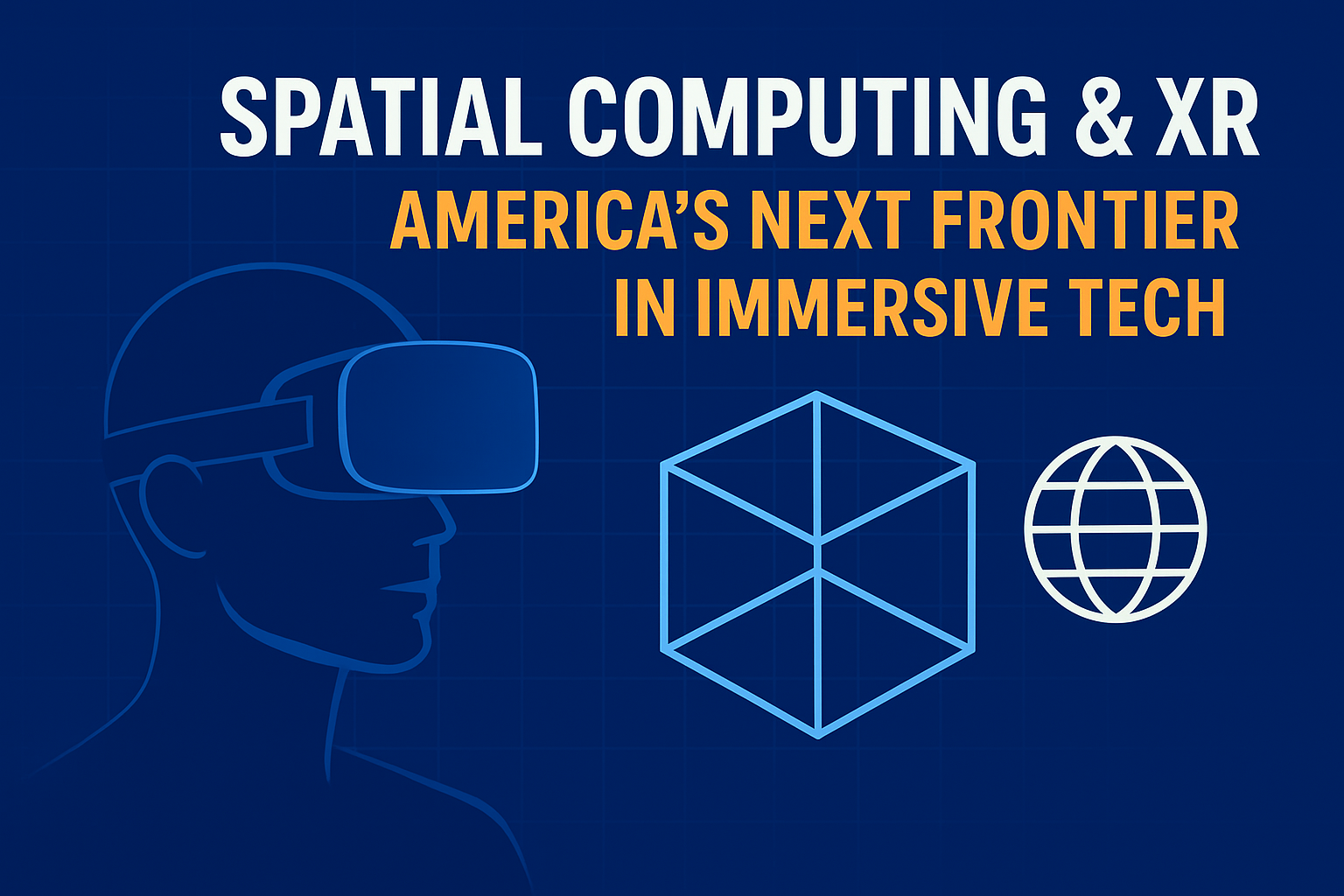Technology has always reshaped how people live, work, and connect. In 2025, one of the biggest revolutions in the United States is the rise of spatial computing and extended reality (XR). From Apple’s Vision Pro headset to advanced AR glasses and enterprise VR solutions, immersive technologies are moving beyond gaming and becoming essential for businesses, education, healthcare, and entertainment.
In this article, we will explore what spatial computing and XR mean, why they are trending in the U.S., how they are being used across industries, and what challenges and opportunities lie ahead.
What is Spatial Computing and XR?
Spatial computing combines the physical and digital worlds, allowing people to interact with data and digital objects in real-world spaces. Imagine pulling a 3D map into your living room or attending a meeting where virtual colleagues sit next to you as holograms.
On the other hand, XR (Extended Reality) is an umbrella term that includes:
- AR (Augmented Reality): Enhancing the real world with digital overlays (like AR glasses).
- VR (Virtual Reality): Fully immersive digital environments (like Meta Quest headsets).
- MR (Mixed Reality): Blending both physical and digital objects in real time.
Together, XR and spatial computing are redefining how humans experience digital content.
Why Spatial Computing is Trending in the U.S.
Several factors explain why this technology is booming in America in 2025:
- Apple Vision Pro launch: Apple’s spatial computing device has pushed XR into the mainstream, similar to how the iPhone transformed smartphones (Apple).
- Enterprise adoption: U.S. companies in construction, healthcare, and retail are testing XR for training, product design, and customer engagement.
- Remote collaboration: With hybrid work now the norm, immersive meetings and 3D environments are replacing flat video calls.
- Gaming & entertainment: The U.S. gaming industry is integrating XR to deliver deeper, more interactive experiences.
- Government & defense: Military and defense organizations are investing in XR simulations for safe, realistic training.
Key Applications of Spatial Computing & XR
1. Healthcare Innovations
Doctors in the U.S. now use XR for surgical planning and medical training. Spatial computing allows surgeons to visualize 3D scans of organs before operating. It reduces risks and improves patient outcomes.
2. Education & Training
Virtual classrooms and immersive labs make learning more engaging. For example, students can “walk through history” in VR or simulate science experiments safely.
3. Business Collaboration
Instead of 2D Zoom calls, U.S. companies like Meta, Microsoft, and Apple are developing immersive meeting rooms. Teams can brainstorm on 3D whiteboards, making remote collaboration more natural.
4. Retail & Shopping
Brands are introducing virtual try-ons—whether it’s clothes, makeup, or furniture. Customers can see how a sofa looks in their living room before purchasing.
5. Real Estate
Property buyers in the U.S. can now tour homes virtually. Realtors use XR headsets to provide immersive experiences, saving time and travel costs.
6. Gaming & Entertainment
The entertainment industry is rapidly adopting XR for concerts, sports, and interactive storytelling. Imagine watching an NBA game courtside from your living room.
Opportunities Ahead
- Job creation: XR development is opening roles for 3D designers, developers, and engineers.
- Accessibility: Immersive tech can empower people with disabilities through adaptive interfaces.
- AI + XR integration: As AI evolves, it will make XR environments smarter, more realistic, and personalized. (You can also read about how AI-driven search is reshaping the internet).
Challenges to Overcome
- Hardware cost: Devices like the Apple Vision Pro remain expensive for average Americans.
- Motion sickness: Some users face discomfort during long VR sessions.
- Privacy concerns: XR collects huge amounts of biometric and location data, raising ethical questions. (Learn more about ethical and explainable AI in 2025).
- Standardization: Lack of industry standards slows adoption across platforms.
- Digital divide: Not every American can access high-speed internet or advanced devices.
The Role of Blockchain in Spatial Computing
Interestingly, blockchain technology is finding a role in XR. Secure transactions, digital ownership, and metaverse assets can be powered by blockchain. For instance, virtual real estate or digital art inside XR environments can be tokenized. If you are curious, explore this detailed guide on blockchain beyond crypto in 2025.
What Experts Are Saying
- Forbes calls XR one of the top 10 technology trends of 2025, highlighting its business potential (Forbes).
- The Verge notes that immersive computing could change how Americans interact with AI-powered agents (The Verge).
- Wired emphasizes XR’s role in shaping the future of work and entertainment (Wired).
The Future of XR in America
By 2030, spatial computing and XR could be as common as smartphones. Analysts predict:
- Mainstream affordability: XR devices will get cheaper and lighter.
- Metaverse integration: Virtual spaces will become social hubs, workplaces, and shopping centers.
- AI-driven environments: Intelligent XR systems will adapt to user preferences automatically.
The U.S. is already at the front line of this shift, with Silicon Valley startups and tech giants competing to lead the immersive revolution.
Conclusion
Spatial computing and XR are no longer futuristic dreams—they are today’s reality in America. From healthcare and education to retail and entertainment, these technologies are transforming daily life. While challenges like cost, privacy, and accessibility remain, the opportunities far outweigh the risks.
For businesses, early adoption means staying competitive in an increasingly immersive world. For consumers, it promises a new way to learn, work, and experience life.
🚀 America’s next frontier in tech is immersive, spatial, and limitless.
